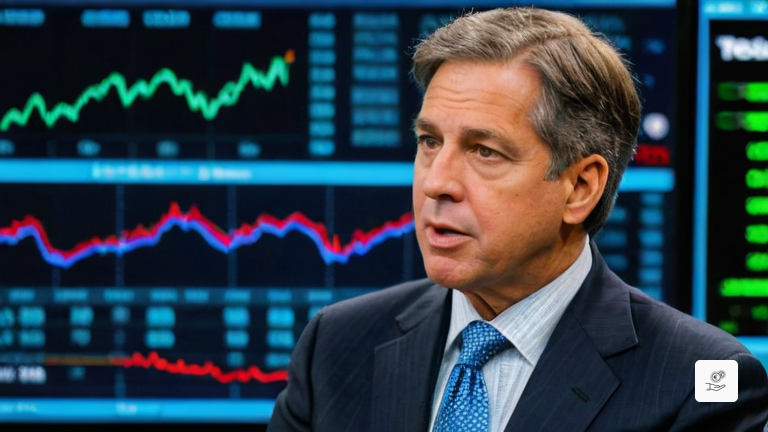Velocity Logic: The Dynamic Safeguard for Futures Markets

Navigating Market Volatility with Velocity Logic
In the fast-paced world of futures trading, extreme market movements can wreak havoc on investors’ portfolios. To safeguard against such volatility, the Chicago Mercantile Exchange (CME) has implemented Velocity Logic, a sophisticated market integrity control measure designed to prevent excessive price swings within predefined parameters.
Unveiling Velocity Logic: A Guardian of Market Stability
Velocity Logic operates as a vigilant sentinel, constantly monitoring futures price movements. When potential price fluctuations exceed predefined limits within a specified time frame, the mechanism swiftly intervenes to curb extreme market volatility. This intervention aims to maintain a healthy trading environment, ensuring that market participants can make informed decisions in a stable market.
How Velocity Logic Works: A Step-by-Step Guide
Upon activation, Velocity Logic meticulously scrutinizes each incoming order against predetermined upper and lower limits. If the system detects a potential trade that violates these limits, it promptly suspends order matching, effectively pausing trading. This temporary halt provides a crucial window for market participants to reassess the situation and make informed decisions based on the latest market information, rather than acting on panic or impulse.
It’s important to note that Velocity Logic’s suspension affects both futures and options markets. For instance, on August 23, 2015, Gold futures trading was temporarily halted for 10 seconds after a sudden drop in gold prices triggered a Velocity Logic event.
The Impact of Velocity Logic on Your Trading Strategy
Understanding the implications of Velocity Logic is crucial for traders. When the mechanism is triggered, the entire group of related instruments, such as metals, Forex, equities, treasury, or energy, transitions to a Pre-Open state, allowing traders to enter, modify, or cancel orders.
However, if the futures instrument does not belong to the aforementioned groups, only the specific market affected will enter a Reserved or Paused state. Additionally, Velocity Logic events in futures markets also impact the corresponding options market, pausing trading and canceling all mass quotes.
Traders can utilize the time during the trading suspension to incorporate the latest market information into their strategies and make necessary adjustments.
Navigating the Reserved State: A Time for Reassessment
When Velocity Logic enforces a trading halt, the market enters a Reserved state. Traders receive a Security Status notification informing them of this transition. During this period, a timer tracks the duration of the trading suspension, which can vary depending on the reasons that triggered the Velocity Logic event.
Market Reopens: Resuming Trading with Indicative Opening Price
Before the market returns to its active state, it undergoes Indicative Opening Price verification. This process aims to establish an expanded price range to assess potential Indicative Opening Price values. If these values fall within the newly expanded range, the market reopens, and traders are notified of the Indicative Opening Price to resume trading.
However, if the values fall outside the extended range, the market remains in the Reserved state, and the system performs another Indicative Opening Price verification. This process continues until the market falls within the acceptable price range.
It’s important to note that the Reserved state persists for a few seconds after the market reopens. In the corresponding options market, trading resumes once the Velocity Logic event in the futures market has been resolved. Price discovery in the options market is determined by customer quote submissions.
Velocity Logic and Dynamic Circuit Breakers: A Comparative Analysis
Velocity Logic shares similarities with circuit breakers, but it operates with a unique approach. Circuit breakers are emergency-use measures that halt trading when prices exceed predefined levels, typically in response to extreme market fluctuations. Velocity Logic, on the other hand, not only monitors excessive price movements but also considers the speed at which these movements occur.
This distinction allows Velocity Logic to detect and prevent price swings that may not trigger traditional circuit breakers. Initially referred to as “Dynamic Circuit Breakers (DCB)”, Velocity Logic was proposed as an alternative to the 1-second minimum quote life recommended by the National Cattlemen’s Beef Association (NCBA).
Benefits of Incorporating Velocity Logic into Your Trading Strategy
While Velocity Logic enforcement and the resulting trading halts are beyond a trader’s control, these events can be leveraged to enhance trading strategies. For buy-and-hold investors, Velocity Logic may not significantly impact their approach. However, for day traders, utilizing Velocity Logic events to reevaluate positions and incorporate the latest market information can be a game-changer.
Key Takeaways: A Summary of Velocity Logic’s Impact
– Velocity Logic is a market control mechanism that detects and prevents excessive price movements within predefined time intervals.
– When activated, Velocity Logic suspends trading and transitions the market to a Reserved state.
– If the affected instrument belongs to the energy, metals, equities, Forex, or treasury groups, the entire group of related instruments enters a Pre-Open state.
– Velocity Logic events in futures markets also impact the corresponding options market, pausing trading and canceling mass quotes.
– Traders receive Security Status notifications when Velocity Logic is in effect and are informed when the market reopens.
– During Pre-Open or Reserved states, there is no order matching, providing traders with an opportunity to reassess the situation and adjust their strategies.
– Velocity Logic operates similarly to dynamic circuit breakers, but it considers both price movement and speed.




